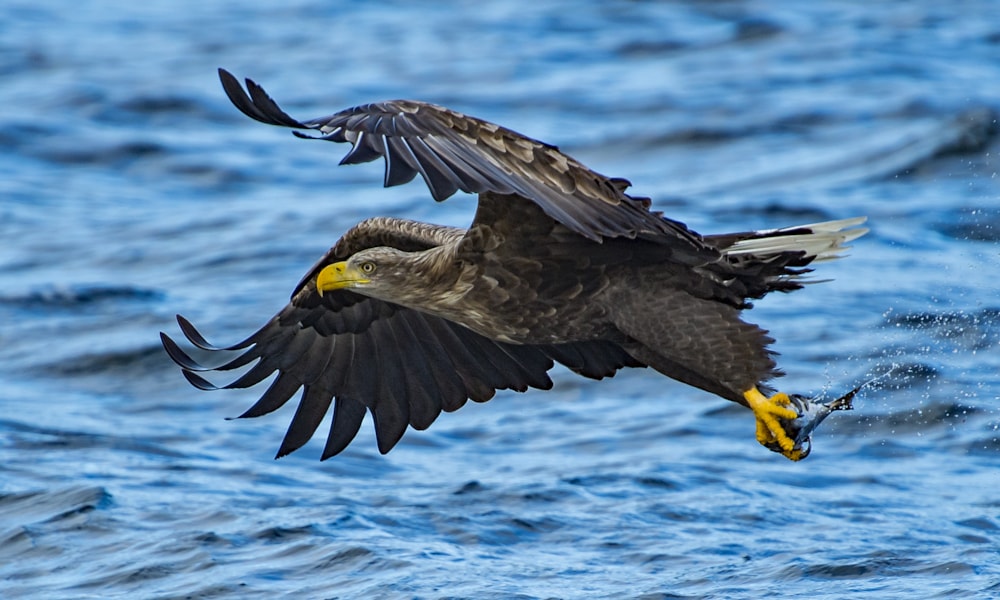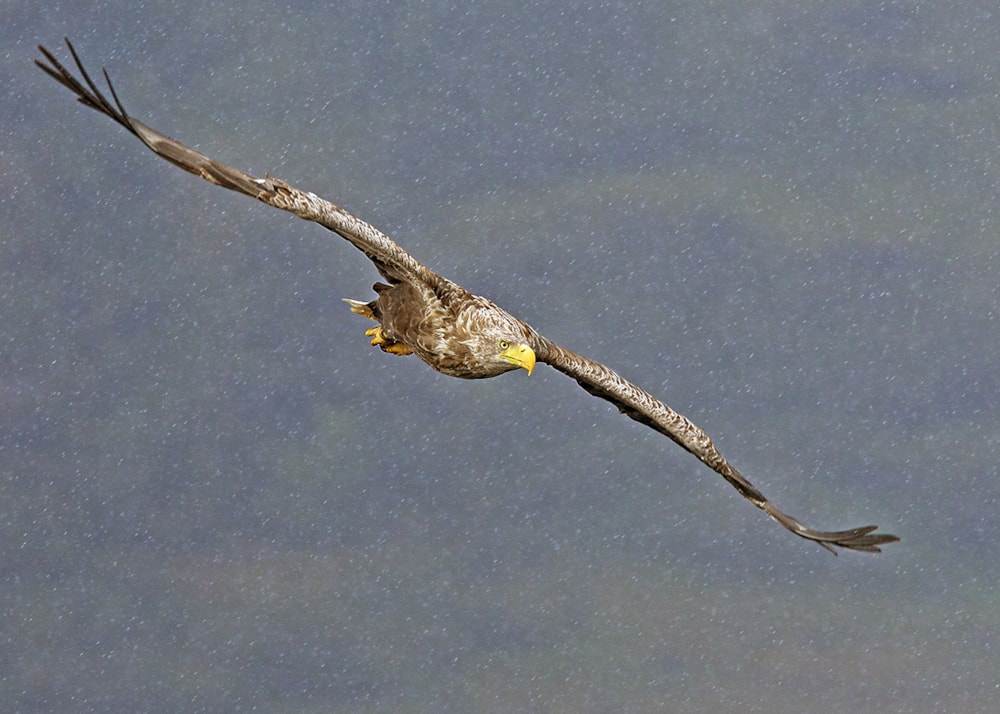Plans afoot to reintroduce White-tailed Eagle to the Isle of Wight
Conservationists are exploring the feasibility of a White-tailed Eagle reintroduction project in the Solent. The Forestry Commission and Roy Dennis Wildlife Foundation, along with other partners, have identified the Isle of Wight as a potential release area due to its position amid rich foraging areas in the Solent, and with a strategic location on the south coast. White-tailed Eagle hasn't bred on the Isle of Wight – or anywhere in England – for almost 150 years, but the species has benefited from successful reintroduction schemes in Scotland and Ireland.
White-tailed Eagles were once widespread along the entirety of the south coast from Cornwall to Kent before being driven to extinction by relentless persecution. Members of the public have been invited to three open meetings in the island so they can find out more about the proposals and these have – according to the foundation – generated significant interest.

White-tailed Eagle last bred on the Isle of Wight in 1870, on Culver Cliffs, which also represents the last English breeding record (Martyn Jones).
The charity is also conducting an online survey to gather opinions on the scheme and Dr Tim Mackrill, who is working on the project, said: "We feel that the Isle of Wight and surrounding area is a perfect place for them because there is high food availability and plenty of nesting sites. There are other far-reaching benefits such as tourism – they have generated £5m for the economy on the Isle of Mull and £2.4m for the Isle of Skye."
If the consultation and feasibility study are successful, the foundation would need to apply for a licence from Natural England. Should one be granted, it's possible the first birds could be released as soon as 2019. Preliminary releases would involve very small numbers, derived from the Scottish populations, at a confidential site over a five-year period. Any tentative population restoration on the island would be part of international efforts to help the eagles, linking populations north of the border and across the Irish Sea, as well as with those in The Netherlands and France
Roy Dennis said: "We believe that the Isle of Wight is highly suitable for White-tailed Eagles. It is the last known breeding site of the species in southern England, the Solent and surrounding estuaries will provide a rich food supply, there are numerous potential nesting sites in woods and cliffs and also good loafing areas for young birds.
"Evidence from The Netherlands, where there is a small but growing population of White-tailed Eagles, indicates that the birds will do very well in this landscape. We are keen to consult the local community, landowners and other stakeholders on the Island to encourage support and involvement in the project, and to identify and resolve any concerns."

Could White-tailed Eagle become a familiar sight on the English south coast once more? (Marcus Conway - ebirder).

